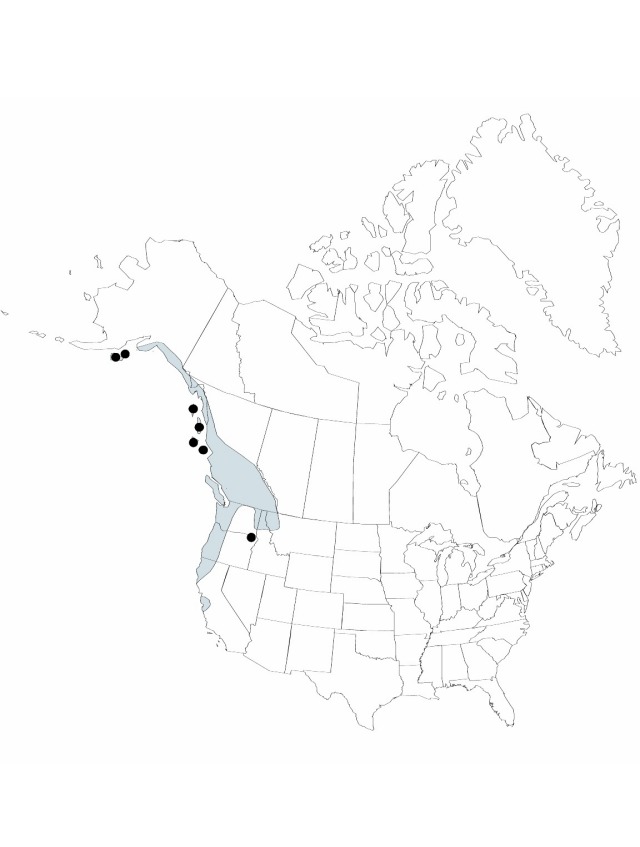Lysichiton americanus
Svensk Botanisk Tidskrift 25:455. 1931 (as Lysichitum americanum).
Roots white, contractile. Rhizomes to 30 cm or more, 2.5–5 cm diam. Leaves large; petiole stout, 5–40 cm; blade to 135 × 70 cm, base cuneate to subtruncate, apex obtuse to acute; midvein thick, grading into petiole. Inflorescences erect, malodorous, distinctive indoloid odor remaining even in old herbarium specimens; spathe wilting shortly after anthesis, basal portion 8–40 cm; blade basally contracted into long sheath enclosing stipe, 8–25 cm, stipe elongating in fruit; spadix stipitate, 4–12(–14) cm, initially shorter than spathe, eventually long-exserted because of elongation of stipe. Flowers yellowish green; tepals 4; stamens 4, dehiscing longitudinally; ovaries (1–)2-locular; ovules 1–2. Infructescences oblong-ovate, 4–15 × 1.5–4 cm. Seeds gray-brown to red-brown, (3–)5–11 mm. 2n = 28.
Phenology: Flowering late winter–spring.
Habitat: Swamps, wet woods, along streams, and other low wet areas
Elevation: 0–1400 m
Distribution

B.C., Alaska, Calif., Idaho, Mont., Oreg., Wash., naturalized in Europe.
Discussion
Reports of Lysichiton americanus in Wyoming (R. D. Dorn 1977; E. Hultén and H. St. John 1931) are based on a single specimen labeled "Yellowstone National Park." Despite recent attempts to locate Lysichiton at this locality, it has not been found (R. Hartman, personal. communication.). In addition, Wyoming is extralimital to the range of this species, which follows a biogeographic pattern typical of many plant and animal species in western North America.
Lysichiton americanus is pollinated by adults of Peelecomalius testaceum (Coleoptera: Staphylinidae), which feed on the pollen and use the inflorescences as a mating site. The distinctive odor produced by the inflorescences acts as an initial attractant for the beetles, which respond by initiating search behavior for yellow spathes (O. Pellmyr and J. M. Patt 1986).
Plants of this species were used as food, as medicine, and also in the material culture of Native Americans of northwestern North America (S. A. Thompson 1995). Although considered to be a famine food and rarely part of the diet under normal conditions, almost all parts were eaten. Perhaps the most important and widely used parts of Lysichiton americanus were the large, waxy leaves, which served the same functions as waxed paper does today. Medicinal use of the leaves, especially as a poultice for burns and injuries, was widespread among northwestern Native Americans. Like Symplocarpus foetidus, this species is widely planted in European gardens (F. W. Case 1992).
Selected References
None.
